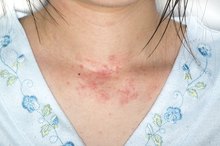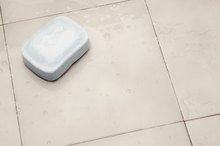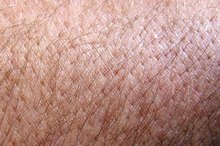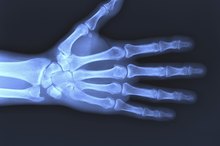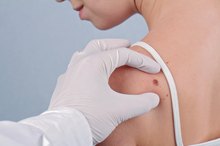What does fact checked mean?
At Healthfully, we strive to deliver objective content that is accurate and up-to-date. Our team periodically reviews articles in order to ensure content quality. The sources cited below consist of evidence from peer-reviewed journals, prominent medical organizations, academic associations, and government data.
- "Plastic and Reconstructive Surgery;" Avoiding and Treating Dermal Filler Complications; G Lemperle et., al.; September 2006
- "Plastic and Reconstructive Surgery;" Avoiding and Treating Dermal Filler Complications; G Lemperle et., al.; September 2006
- U.S. Food and Drug Administration: Executive Summary - Dermal Filler Devices
The information contained on this site is for informational purposes only, and should not be used as a substitute for the advice of a professional health care provider. Please check with the appropriate physician regarding health questions and concerns. Although we strive to deliver accurate and up-to-date information, no guarantee to that effect is made.
Derma Filler Side Effects
Derma, or dermal, fillers, such as hyaluronic acid or collagen, are a type of cosmetic procedure used to temporarily reduce wrinkles or lines in the facial skin. Typically, this type of treatment is administered as an injection beneath the skin at the desired treatment site. Patients who chose to receive dermal filler injections should be aware of the potential side effects of this procedure.
Injection Site Reaction
Treatment with a dermal filler can result in an injection site reaction. Affected patients can develop early side effects of swelling or redness at the site of treatment, warns G. Lemperle and colleagues in a September 2006 article published in the journal "Plastic and Reconstructive Surgery." Injection site reaction site effects are typically temporary and generally subside within a week following treatment 2.
Bleeding or Bruising
Bad Side Effects of Juvederm
Learn More
Unusual bleeding or bruising can occur as a side effect of dermal filler treatment, explain health professionals with the Better Health Channel. The skin surrounding the treated skin can appear dark red, purple or blue in color and can be tender to the touch. While minor bleeding following treatment is normal, persistent or severe bleeding should be immediately reported to a medical professional.
Skin Lump or Mass
Patients treated with a dermal filler can develop a firm lump or mass beneath the skin at the site of injection, explains Drugs.com 4. Unusual skin lumps can be embarrassing to certain people as such side effects can be noticed by friends, family members or colleagues. Abnormal skin masses typically resolve within a week following treatment.
Skin Discoloration
Betaderm Side Effects
Learn More
Unusual lightening or darkening of the treated skin can occur as a side effect of dermal filler use, explain health professionals with the U.S. Food and Drug Administration 3. These side effects, called hypopigmentation and hyperpigmentation, are typically temporary but can persist in certain patients. Patients concerned about unusual skin discoloration following dermal filler treatment should consult a physician for further evaluation and care.
- Unusual lightening or darkening of the treated skin can occur as a side effect of dermal filler use, explain health professionals with the U.S. Food and Drug Administration 3.
Infection
Dermal filler treatment can increase a patient's risk of developing a skin infection at the site of injection, explain medical experts with the Better Health Channel. The infected skin region can become swollen and itchy or may develop a skin ulcer or lesion. Patients who develop a bacterial or viral skin infection after receiving a dermal filler injection should seek care from a doctor. Additional medication may be necessary to resolve skin infection symptoms in affected patients.
- Dermal filler treatment can increase a patient's risk of developing a skin infection at the site of injection, explain medical experts with the Better Health Channel.
- Patients who develop a bacterial or viral skin infection after receiving a dermal filler injection should seek care from a doctor.
Related Articles
References
- Better Health Channel: Cosmetic Treatments - Injectables - Possible Complications - Dermal Fillers
- "Plastic and Reconstructive Surgery;" Avoiding and Treating Dermal Filler Complications; G Lemperle et., al.; September 2006
- U.S. Food and Drug Administration: Executive Summary - Dermal Filler Devices
- Drugs.com: Juvederm
- De Boulle, K. and Hey, I. "Patient Factors Influencing Dermal Filler Complications: Prevention, Assessment, and Treatment." Clinical, Cosmetic, and Investigational Dermatology. 2015.
- Funt, D. and Pavicic, T. "Dermal Fillers in Aesthetics: An Overview of Adverse Events and Treatment Approaches." Plastic Surgical Nursing. 2015.
- Shah AR, Wise JB, Constantinides M. "Facial Fillers & Implants." CURRENT Diagnosis & Treatment in Otolaryngology—Head & Neck Surgery, 3e. Lalwani AK. eds. New York, NY: McGraw-Hill; 2012.
Writer Bio
Rae Uddin has worked as a freelance writer and editor since 2004. She specializes in scientific journalism and medical and technical writing. Her work has appeared in various online publications. Uddin earned her Master of Science in integrated biomedical sciences with an emphasis in molecular and cellular biochemistry from the University of Kentucky College of Medicine.

